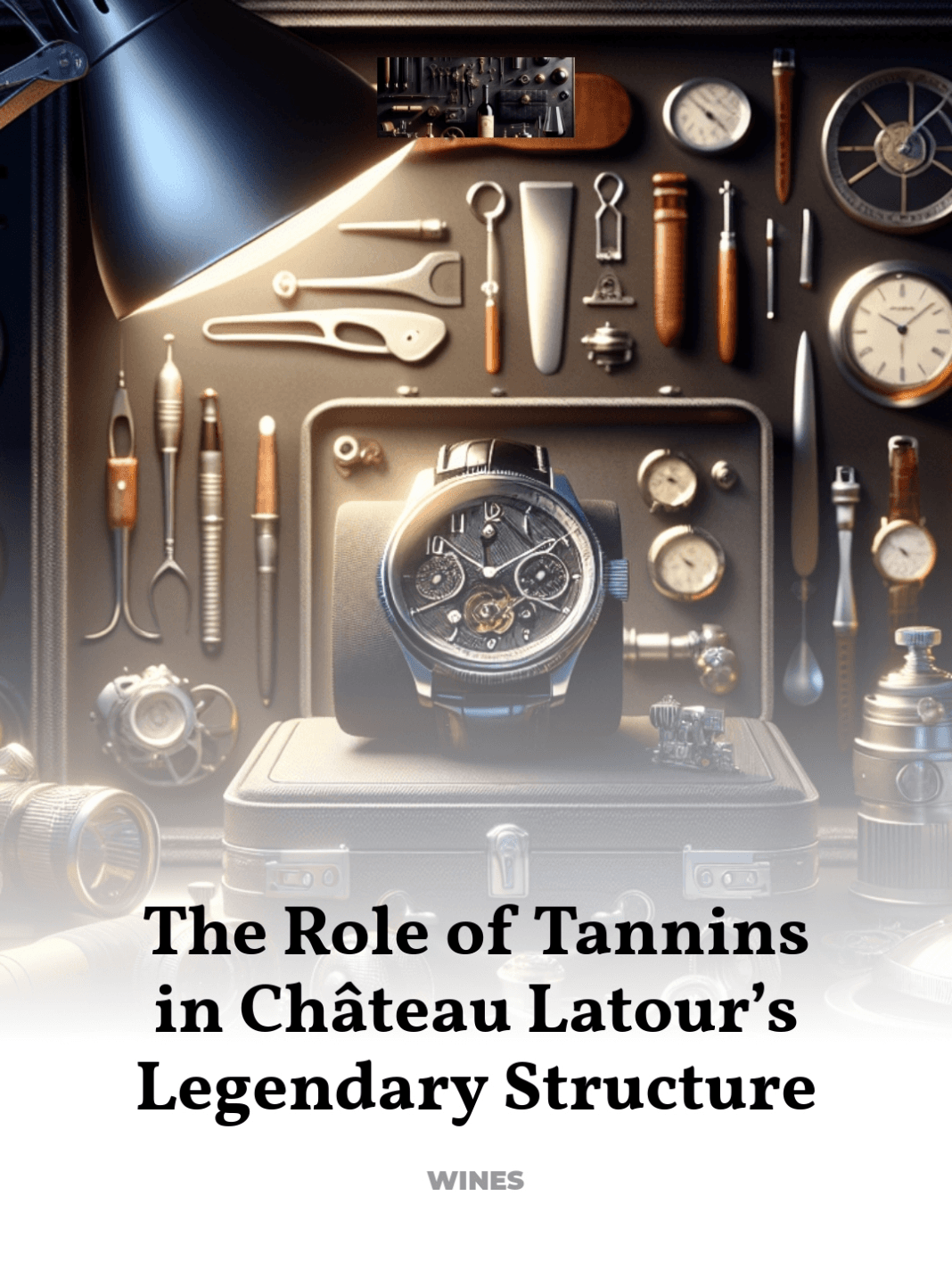Understanding the Backbone of This Wine’s Aging Potential
Château Latour, a beacon of viticultural excellence, stands as a testament to the profound complexity and aging potential of fine wine. Nestled in the heart of Bordeaux, this iconic estate has consistently produced wines that are not only a reflection of its prestigious terroir but also a celebration of the meticulous craftsmanship behind each bottle.
- The Importance of Tannins in Wine
- Château Latour: A Profile
- How Tannins Shape Château Latour’s Wines
- The Aging Process and Tannins
- Tasting Notes: The Evolution of Tannins
- Connoisseur Insights
The Importance of Tannins in Wine
Tannins, the naturally occurring compounds found in grape skins, seeds, and stems, are pivotal in defining the structure and longevity of red wines. These polyphenolic compounds impart astringency and complexity, influencing both the tactile and flavor profile of the wine.
- Structural Role: Tannins contribute to the overall architecture of a wine, providing the framework that supports aging.
- Sensory Impact: They affect the mouthfeel, giving wine its characteristic dryness and astringency.
- Antioxidant Properties: Tannins act as natural antioxidants, which are crucial in the aging process, allowing wines to develop depth and complexity over time.
Château Latour: A Profile
Château Latour, with its origins dating back to the 14th century, is one of Bordeaux’s oldest and most esteemed wine estates. Located in the Pauillac appellation, the château has a rich history intertwined with the land it occupies. The estate’s proximity to the Gironde estuary creates a microclimate that ensures optimal ripening of Cabernet Sauvignon, the predominant varietal used in their wines.
- Historical Significance: The estate has been a fixture in wine history, known for its consistency and excellence across centuries.
- Viticultural Practices: Château Latour employs organic and biodynamic practices, emphasizing the natural expression of the terroir.
- Iconic Wines: The Grand Vin, Château Latour’s premier wine, is renowned for its ability to balance intensity with elegance, a direct result of its tannin structure.
How Tannins Shape Château Latour’s Wines
The tannins in Château Latour’s wines are carefully managed from vineyard to bottle, ensuring they contribute positively to the wine’s structure and aging potential. The estate’s focus on Cabernet Sauvignon, a varietal known for its high tannin content, allows for the creation of robust wines capable of significant evolution.
- Extraction Techniques: During vinification, techniques such as extended maceration are used to extract the optimal level of tannins from the grape skins.
- Barrel Aging: The use of French oak barrels not only introduces additional tannic structure but also helps in the gradual softening of the wine’s natural tannins.
- Tannin Integration: Over time, the tannins polymerize and integrate into the wine, enhancing its texture and complexity.
The Aging Process and Tannins
The interplay between tannins and the aging process is critical in understanding why Château Latour’s wines possess such remarkable longevity. Tannins act as preservatives that slow the oxidation process, allowing the wines to mature gracefully while developing nuanced flavors and aromas.
- Cellar Aging: Château Latour’s wines are known for their cellar aging potential, with top vintages thriving for decades.
- Flavor Development: As the wine ages, tannins precipitate out, leading to a smoother mouthfeel and the emergence of secondary and tertiary flavors.
- Optimal Drinking Window: The understanding of tannin evolution helps connoisseurs determine the best time to enjoy the wine at its peak.
Tasting Notes: The Evolution of Tannins
Experiencing Château Latour across different vintages provides insight into how tannins evolve. From the robust and grippy tannins of a young Latour to the silky, well-integrated tannins of an aged bottle, each stage of maturation showcases distinct characteristics.
- Young Vintages: Marked by bold tannins that promise longevity and complexity as they mellow.
- Mature Vintages: Exhibit softened tannins that contribute to a velvety texture and complex flavor profile.
- Historic Vintages: Offer a glimpse into the graceful aging process, with tannins fully integrated into the wine’s structure.
Connoisseur Insights
For enthusiasts and collectors, understanding the role of tannins in wines like those from Château Latour is essential for appreciating their depth and potential for aging. The meticulous management of tannins, from the choice of grape varietals to the nuances of barrel aging, underscores the estate’s commitment to producing wines of extraordinary caliber and longevity.
For further exploration of Château Latour’s winemaking philosophy and heritage, visit authoritative sources such as Château Latour’s Official Website.



